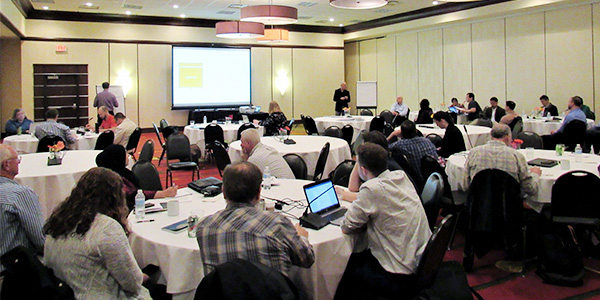By Amanda Durish Cook
CARMEL, Ind. — MISO will kick off discussions on distributed energy resources policy after it this month completes a third round of stakeholder workshops on integrating DER into its system, the RTO said this week.
Over the next decade, MISO expects to confront increased volumes of DERs that will “likely challenge utility staff and processes” with possible two-way flows of electricity on the distribution system.
Those challenges were the topic of an April 9-10 workshop that nearly concludes a series of educational sessions hosted by the MISO and the Organization of MISO States.
The events are a precursor to MISO bringing discussion of DER market rules into its stakeholder process as RTO leaders prepare for a possible MISO Contemplates DER Effect, Possible Rules.) MISO will host identical sessions April 17-18 in Little Rock, Ark., and April 24-25 in Eagan, Minn.
MISO staff said they would use input from the final workshops to set policy-level discussions with stakeholders on DER integration.
MISO DER project manager Kristin Swenson said once the workshops are complete, MISO may assemble stakeholders for periodic “debriefs” on what aspects of DER integration MISO might address first.
Swenson also said the RTO is trying to forge deeper connections with distribution utilities after it encountered difficulties assembling a large group of distribution operators for the early April event.
“MISO does not have deep connection with the distribution operators in our footprint. Our main connections are with our transmission operators,” Swenson said, adding MISO might consider holding more local meetings “to move the conversation to them.” She also asked stakeholders in the room for suggestions on how best to involve distribution operators in the DER conversation.
Breakout Session
Attendees broke into groups to consider several DER integration questions with the caveats that representatives from the same companies not sit together and that state regulators not share tables with representatives from the utilities they oversee. Participants observed Chatham House Rules, not attributing discussion points to specific individuals or companies. The idea, MISO representatives said, was to encourage free conversation.
MISO asked the roughly 50 attendees to discuss modeling behind-the-meter generation and how to best approach DER deployment in load forecasting and long-term DER planning assumptions. It also asked distribution operators how they approach generation interconnection on the distribution level and the funding of distribution upgrades, as well as how they might manage reverse flow congestion, real power flow patterns and phase balancing issues.
The RTO also prompted distribution companies to consider how they might alter their under-frequency and under-voltage load shed schemes under circumstances in which the schemes could shed generation as well as load.
Workshop attendees said distribution utilities will need to create interconnection protocols and facilitate a three-way communication system among the DERs, themselves and the grid operator. Many MISO members predicted distribution utilities will become mini system operators themselves. Others said distribution utilities themselves will need better visibility into their own operations before they can hand off DER information to MISO. Some distribution representatives probed MISO on what level of detail it could handle in terms of DER data submissions.
Other participants said MISO should determine when utilities might come to rely on DERs, though some allowed that long-term DER load forecasting is a difficult process. Attendees said MISO must factor in economics, weather patterns and unusual weather and state policies when forecasting DERs for planning. Some added MISO should hire an in-house meteorologist to better predict when certain DERs will be in use.
If DERs are to become market resources in MISO, the resources should be prepared to supply the RTO with the same types of information required of traditional resources, many attendees agreed.
Break with Tradition?
MISO adviser Robert Merring said significant DER penetration could prompt MISO to expand reserve requirements. He also noted that essentially “uncontrolled generation” could further impact transmission constraints.
“Our traditional way of doing business — we plan for an annual peak and we’re good — may no longer work. Those load profiles are changing,” he told attendees.
With significant solar generation on the system, MISO could also experience “huge ramps at sunset,” Merring said. “They have one heck of a race at sunset to cover their ramping needs,” he said of CAISO.
Merring added MISO today has an “amazingly small” amount of regulating reserves, with the RTO handling virtually all load through its energy market.
Merring said while an abundance of low-cost gas has put a “squeeze” on coal profitability in the footprint, distribution-level generation could soon take its turn in driving down price.
“We’re not seeing a slow-down in distributed resources buildout. If that continues, we’re going to see continued revenue constraints on the traditional fleet,” he said.
Merring concluded with a point salient for most stakeholders: As an increasing volume of load is served by DER generation that bypasses the MISO wholesale market, the RTO’s remaining load could be forced to shoulder more of the cost burden for the system.





